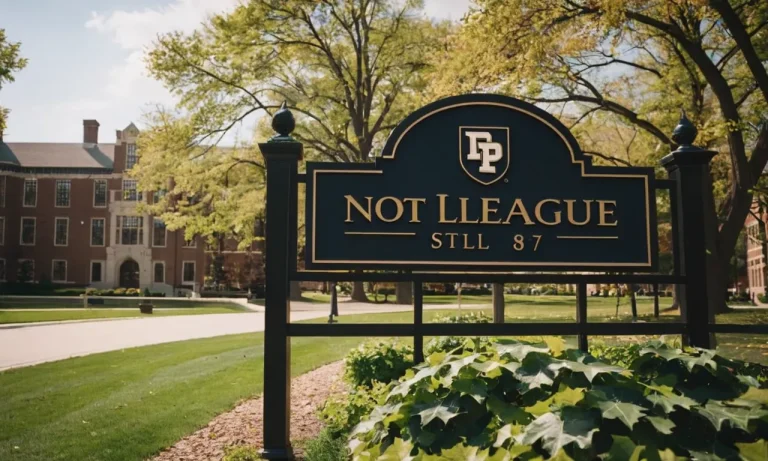In the intricate world of educational administration, the dynamic between a school superintendent and the governing school board is a delicate balance of power and authority. The question of whether a superintendent can override the decisions of the school board is a complex one, with implications that extend far beyond the confines of a single institution.
If you’re short on time, here’s a quick answer to your question: Generally, a school superintendent does not have the authority to override the decisions of the school board. However, there are certain circumstances and exceptions where a superintendent may have the power to act independently or challenge board decisions.
In this comprehensive article, we will delve into the nuances of this relationship, exploring the roles and responsibilities of both parties, the legal frameworks that govern their interactions, and the potential scenarios where a superintendent’s actions may supersede those of the school board.
We will also examine real-world examples and case studies to provide a well-rounded understanding of this intricate dynamic.
Understanding the Roles of Superintendents and School Boards
In the realm of public education, the superintendent and the school board play pivotal roles in shaping the direction and policies of a district. While their responsibilities are intertwined, it’s crucial to understand the distinct functions they serve.
The Superintendent’s Role as Chief Executive Officer
The superintendent acts as the chief executive officer (CEO) of the school district. They are responsible for overseeing the day-to-day operations, implementing policies set by the school board, and ensuring that the district runs smoothly.
As the educational leader, the superintendent manages the administrative team, hires and evaluates personnel, develops budgets, and oversees curriculum development. They serve as the liaison between the school board and the district, providing insight and recommendations based on their expertise.
According to the American Association of School Administrators, over 90% of superintendents believe their role is to provide visionary leadership to the district.
The School Board’s Role as Policymakers and Overseers
The school board is the governing body elected by the community to represent the interests of stakeholders, including parents, students, and taxpayers. Their primary responsibility is to set policies that guide the district’s operations, including curriculum standards, budgetary decisions, and long-term strategic planning.
The board hires and evaluates the superintendent, ensuring accountability and alignment with the district’s goals. While the board establishes policies, it does not directly manage the day-to-day operations of the district, which falls under the superintendent’s purview.
A study by the National School Boards Association found that effective school boards focus on student achievement, allocate resources strategically, and foster a positive school climate.
Delineating Responsibilities and Authorities
While the superintendent and the school board work collaboratively, it’s essential to delineate their responsibilities and authorities. The superintendent is responsible for executing the policies set by the board and managing the district’s operations.
Conversely, the board provides oversight, sets the vision, and holds the superintendent accountable for meeting the district’s goals. However, in certain situations, such as personnel decisions or disciplinary matters, the superintendent may have the authority to override the school board’s decisions, as outlined in state laws and district policies. Maintaining a clear understanding of these roles and responsibilities is crucial for effective governance and decision-making within the district.
Legal Frameworks and Governing Policies
State and Federal Laws Governing School Administration
The authority of a school superintendent is governed by a complex web of state and federal laws, which outline the boundaries of their decision-making power. At the federal level, laws such as the Every Student Succeeds Act (ESSA) and the Americans with Disabilities Act (ADA) establish guidelines for ensuring equal educational opportunities and accommodations for students with disabilities.
These federal mandates serve as a baseline for state-level policies, which often provide more specific regulations tailored to each state’s unique educational landscape. For example, according to the California Education Code Section 35035, the superintendent is responsible for enforcing the rules and regulations established by the school board.
However, the extent of their authority may vary based on state-specific legislation and local policies.
Local School District Policies and Regulations
In addition to state and federal laws, local school district policies and regulations play a crucial role in defining the scope of a superintendent’s authority. These policies are typically established by the school board and outline the specific responsibilities, decision-making powers, and limitations of the superintendent’s role.
For instance, some districts may grant the superintendent the authority to make certain personnel decisions, while others may reserve that power solely for the school board. According to a 2018 report by the National School Boards Association, approximately 60% of school districts have policies that clearly delineate the roles and responsibilities of the superintendent and the school board.
Contractual Agreements and Employment Contracts
Furthermore, the authority of a superintendent is often defined by the terms of their employment contract. These contracts typically outline the specific duties, responsibilities, and decision-making powers granted to the superintendent, as well as the procedures for resolving conflicts or disputes with the school board.
For example, some contracts may explicitly state that the superintendent has the authority to override certain school board decisions in specific situations, while others may require the superintendent to obtain board approval for major decisions.
According to a study by the Education Commission of the States, approximately 75% of superintendent contracts include provisions related to decision-making authority and the delineation of roles between the superintendent and the school board.
😊 It’s crucial for both parties to carefully review and negotiate these contractual agreements to ensure a clear understanding of their respective powers and responsibilities.
Scenarios Where a Superintendent May Override the School Board
While the school board is typically the governing body responsible for making decisions related to the district’s policies and operations, there are certain scenarios where the superintendent may exercise their authority to override the board’s decisions.
These instances are often critical and require swift action to ensure the safety and well-being of students and staff, as well as compliance with legal mandates.
Emergency Situations and Crisis Management
In the event of an emergency or crisis situation, such as a natural disaster, active shooter incident, or public health emergency, the superintendent may need to take immediate action to protect the school community.
This could involve overriding board decisions related to school closures, evacuation procedures, or the implementation of safety protocols. According to a study by the Education Commission of the States, over 60% of states grant superintendents emergency powers during crises to ensure a timely and effective response.
Matters of Student Safety and Well-being
The superintendent’s primary responsibility is to safeguard the safety and well-being of students and staff. In cases where a board decision may compromise these priorities, the superintendent has the authority to override it.
For instance, if a board approves a policy that puts students at risk or violates their rights, the superintendent can intervene and take necessary actions to protect their welfare. This could involve suspending or modifying policies related to disciplinary measures, bullying prevention, or the handling of sensitive student information.
Compliance with Legal Mandates and Regulations
Superintendents are responsible for ensuring that the district operates in compliance with federal, state, and local laws, as well as educational regulations. If a board decision conflicts with these legal mandates, the superintendent has the authority to override it.
This might include decisions related to special education services, anti-discrimination policies, or the allocation of funds for mandated programs. According to a report by the Education Week Research Center, nearly 40% of superintendents have had to override board decisions to maintain legal compliance in the past five years.
It’s important to note that while superintendents have the power to override board decisions in certain circumstances, this authority should be exercised judiciously and with transparency. Open communication and collaboration between the superintendent and the school board are essential for maintaining a productive working relationship and ensuring that the best interests of students and the district are prioritized.
Checks and Balances: Accountability and Oversight
Effective governance in public education relies on a system of checks and balances to ensure accountability and oversight. While the superintendent holds significant authority in managing the district’s operations, the school board plays a crucial role in monitoring and evaluating the superintendent’s performance.
Board Oversight and Evaluation of the Superintendent
The school board is responsible for hiring, evaluating, and, if necessary, terminating the superintendent. Regular performance evaluations are a critical component of this oversight process. According to the National School Boards Association, approximately 89% of school boards conduct formal evaluations of their superintendents annually.
These evaluations typically assess the superintendent’s leadership, financial management, community relations, and progress toward achieving district goals.
The evaluation process often involves setting clear expectations and measurable objectives for the superintendent, which are then used as benchmarks for assessment. Effective board oversight ensures that the superintendent’s decisions and actions align with the district’s vision and priorities, ultimately serving the best interests of students, staff, and the community.
Mechanisms for Challenging Superintendent Decisions
While the superintendent has significant authority in day-to-day operations, the school board retains the power to challenge and potentially override certain decisions. This mechanism ensures a system of checks and balances and prevents an overconcentration of power. 😊
- Board meetings provide a platform for public discussion and deliberation on key issues, allowing board members to scrutinize and potentially overrule the superintendent’s recommendations.
- Community members and stakeholders can also voice concerns and raise objections to the superintendent’s decisions during public comment periods at board meetings.
- In some cases, the board may have the authority to veto or overturn specific decisions made by the superintendent, particularly those related to budgetary matters or significant policy changes.
Resolving Conflicts and Disputes
Despite the checks and balances in place, conflicts and disputes between the school board and the superintendent can arise. In such cases, it’s crucial to have established procedures for resolving these issues constructively. Some common approaches include:
- Mediation or facilitated discussions to foster open communication and find mutually agreeable solutions.
- Independent third-party reviews or investigations to provide an impartial assessment of the situation.
- Clearly defined processes for appealing or challenging decisions, ensuring transparency and due process.
Ultimately, the goal is to maintain a collaborative and productive working relationship between the school board and the superintendent, while upholding the principles of accountability and oversight.
By striking the right balance, districts can ensure effective governance, promote student success, and maintain public trust in the education system. 👏
Conclusion
The relationship between a school superintendent and the governing school board is a delicate balance of power, authority, and accountability. While the superintendent is typically tasked with the day-to-day operations and management of the school district, the school board holds the ultimate decision-making authority and serves as the policymaking body.
In most cases, a superintendent does not have the legal authority to override the decisions of the school board. However, there are certain exceptional circumstances, such as emergency situations, matters of student safety, or compliance with legal mandates, where a superintendent may have the power to act independently or challenge board decisions.
Ultimately, the dynamic between a superintendent and the school board is governed by a complex interplay of state and federal laws, local policies, and contractual agreements. Effective communication, transparency, and a shared commitment to the best interests of students and the community are essential for maintaining a productive and collaborative relationship between these two critical entities in the educational landscape.






